Paris is a cinematographer’s dream. No city is more dazzling in the sunshine or sexier in the rain—or, better still, lit up at night. Which is why it is so achingly familiar to anyone who has ever bought a movie ticket.
View Notre Dame from the Quai de Montebello, and you get An American in Paris; have a coffee at Café des Deux Moulins in Montmartre, and you’re in Amélie. But Paris has always been as much about discovery as déjà vu. Whether it’s the reinvented Pigalle, a rejuvenated République, or the rebooted Sentier district, there’s always something new to besot the next generation of dreamers—and to keep the older ones returning.
Day 1
In which Boyd wings his way through the Louvre, samples 18-month-ripened fruit, and meets a chanteuse after dark
One of the things Parisians like to say about their city is that it’s endlessly walkable—the operative word here being “endlessly.” While each of the city’s 20 arrondissements is conquerable by foot, if you’re planning to see them all in one go, you’d best pack a comfortable pair of shoes. Before I attempt (and fail) such a feat, I need to be dragged away from my breakfast in my hotel’s resplendent surroundings. La Réserve, a grand mansion a block from the Palais de l’Élysée in the 8th arrondissement, was built for Napoléon III’s half-brother. Now, it’s a 40-room hotel and spa, all ruby-red and emerald-green silk and velvet and herringbone oak floors. I’m wedged in an armchair wiping globs of apricot jam from my cheeks when my butler appears, tactfully wondering if I’m ready for my swim.
With too much ground to cover, I instead begin the day with an earnest jaunt through the immediate neighborhood—the most central of Paris’s arrondissements and the one most frequently used as a backdrop in perfume ads. Going out on Avenue Matignon, I reach Rue Saint-Honoré. Home to outposts of some of the world’s most chichi fashion labels, this slender street still has its share of idiosyncratic shops, like Colette, which “curates” everything from rare sneakers to a hundred types of bottled water. Admirably, the sales assistant displays no hauteur when I ask her to remove a $5,000 rose gold iPhone from its cabinet, but she also doesn’t register surprise when I hand it back. “Too heavy,” I say with a wince.
Then it’s off to the Louvre, where my ToursByLocals guide, Eugénie, marshals me through thickets of selfie sticks to the must-sees—Venus de Milo, the Mona Lisa—while delivering factoids about the masterpieces we hurtle past. “This was the inspiration for the first FIFA World Cup trophy,” she hollers over the din of the horde, as we clatter past the second-century BC marble sculpture The Winged Victory of Samothrace.
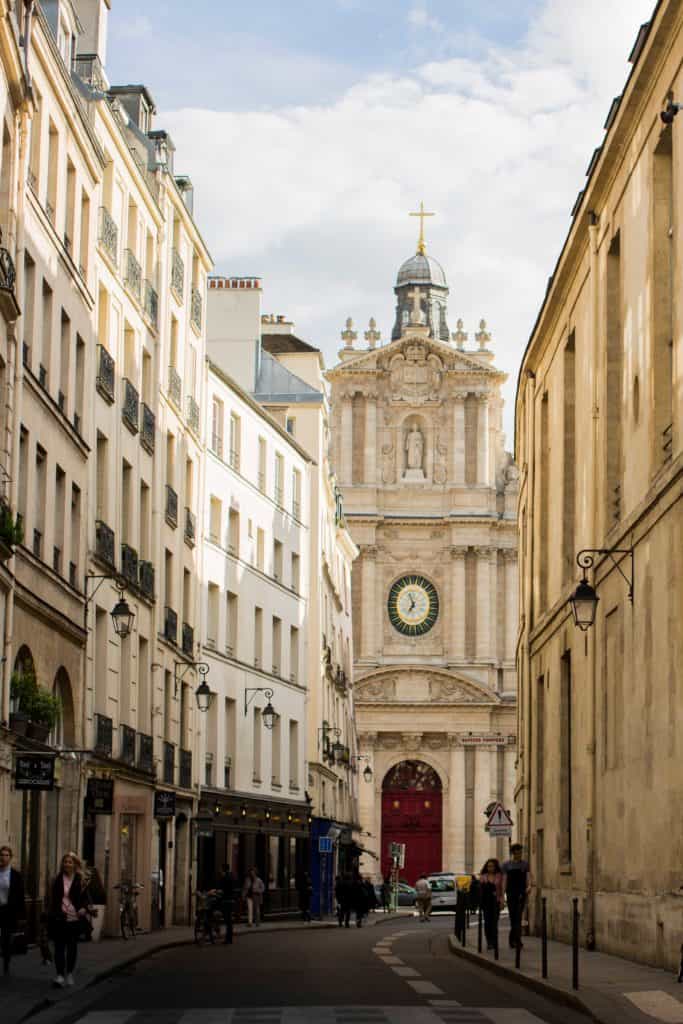
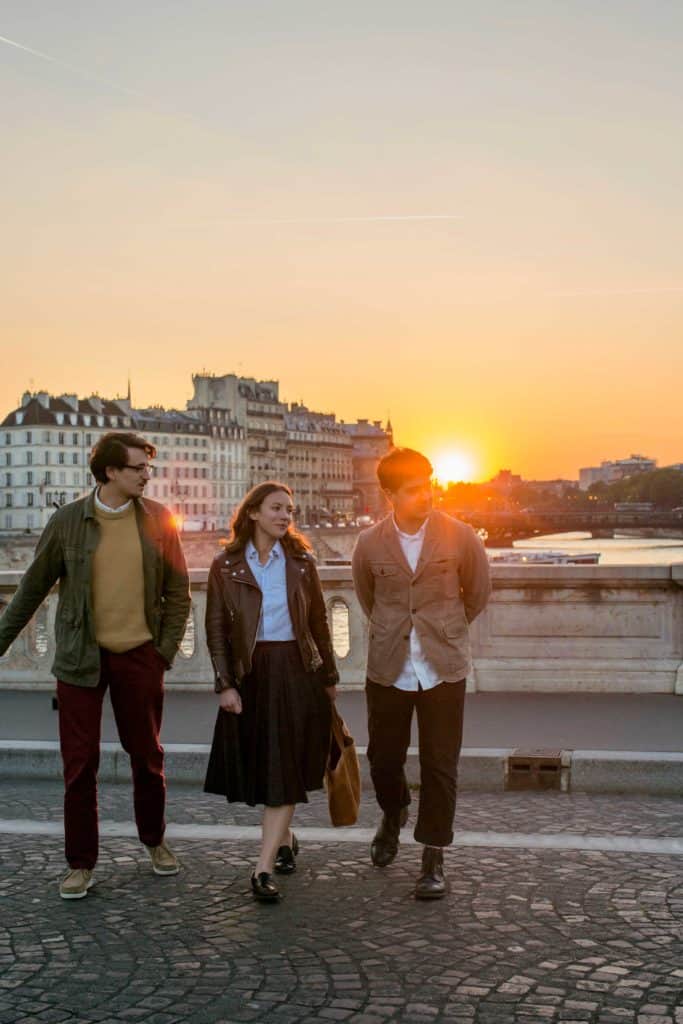
This is the real spirit of Paris. It is creative, inclusive, optimistic.
There’s no time to catch my breath in the Jardin des Tuileries outside. Eugénie steers me toward the park’s southwest corner and the dinky Musée de l’Orangerie. Inside, in twin oval rooms, are Monet’s large-format Nymphéas (Water Lilies) paintings, which seem disconcertingly out of focus in such an intimate space. Downstairs are 120 works from Renoir, Matisse, Picasso, and Cézanne. There are two portraits by Cézanne of his wife, who looks like a completely different person in each. Neither is particularly flattering. “They didn’t get on,” whispers Eugénie.
Lunch is at Les Chouettes, a buzzy eatery whose spacious, iron-clad interior is a blend of 1920s cocktail bar, SoHo loft, and the Eiffel Tower. In the ground-floor restaurant, far below the glass ceiling, the menu is also an artful mash-up: My dish of soft-boiled eggs baked with mushrooms and Brie de Meaux—the ultimate comfort food—is accessorized with a bang-on-trend, Instagram-ready charcoal wafer.
My next stop is Saint-Paul, a medieval neighborhood in the 4th that is often clumped in with the Marais—though it’s far less self-conscious. I check out Saint-Paul-Saint-Louis, the city’s best-known Jesuit church. The elaborate facade is gorgeous, but most of the 17th-century art was plundered during the Revolution. Inside, two rows of golden chandeliers hint at the glory days.
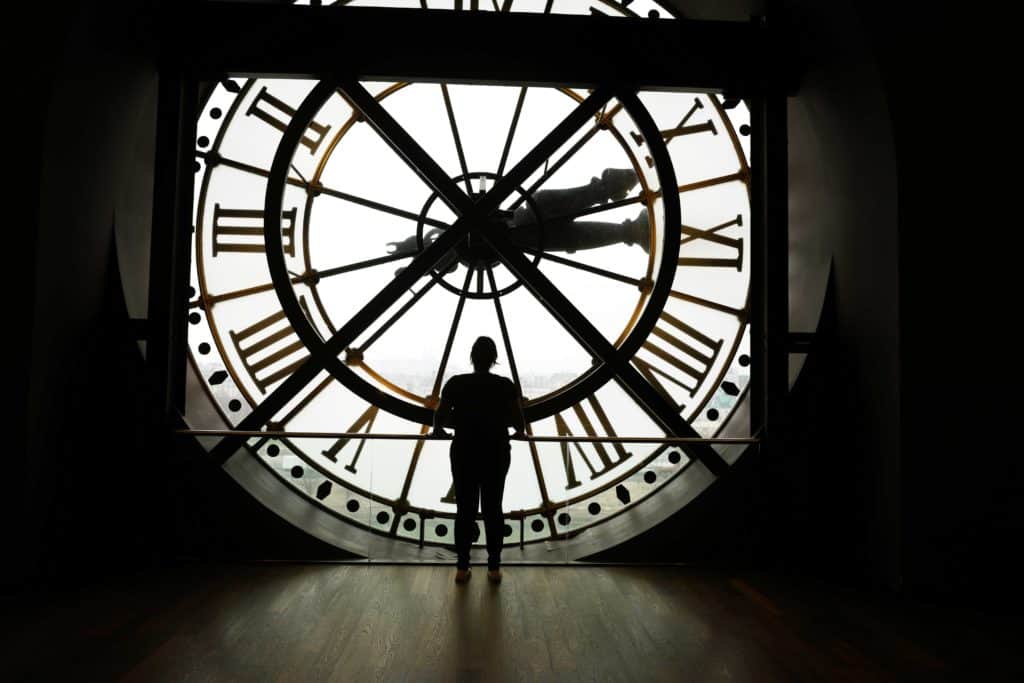
I head west past Hôtel de Ville—a post-Revolution rebuild of the 16th-century city hall, its facade teeming with statues of notable Parisians, ranging from Cardinal Richelieu to Molière—then cross Pont d’Arcole to the Île de la Cité. On this slim river island stands the city’s most celebrated cathedral. Not only is Notre Dame impressively old (construction started in 1163), it’s impossibly gorgeous—a Gothic extravaganza of flying buttresses, sullen gargoyles, and bristling spire. If Paris really were a film set, this would be the Tim Burton quarter.
The line to enter moves surprisingly quickly. Several people troop in, take the obligatory selfie, then shuffle out. Others sit in the candlelight, contemplating the high-vaulted nave and the 42-foot purplish South Rose window featuring the New Testament’s heavy hitters. Then I notice that many of them are fast asleep. Instead of joining, I cab it back to La Réserve for a rejuvenating dip in the pool.
A couple of hours later, in a crisp shirt and my loosest pants, I leave the hotel once more. I have scored a table at three-Michelin-starred chef Yannick Alléno’s restaurant at the nearby Pavillon Ledoyen. My seven-course meal contains two of the best things I have ever eaten: a millefeuille of celeriac and 18-month-ripened avocado, with coconut extraction and chia seeds, and “Stroganoff-style” Wagyu beef. The avocado explodes in my mouth without any of the sweetness I was dreading—the waiter tells me a regular avocado mellows for just three months—but, to be honest, they had me at “Would sir like some bread?” There is even time for a chocolate nib and black olive soufflé before my taxi rolls up.
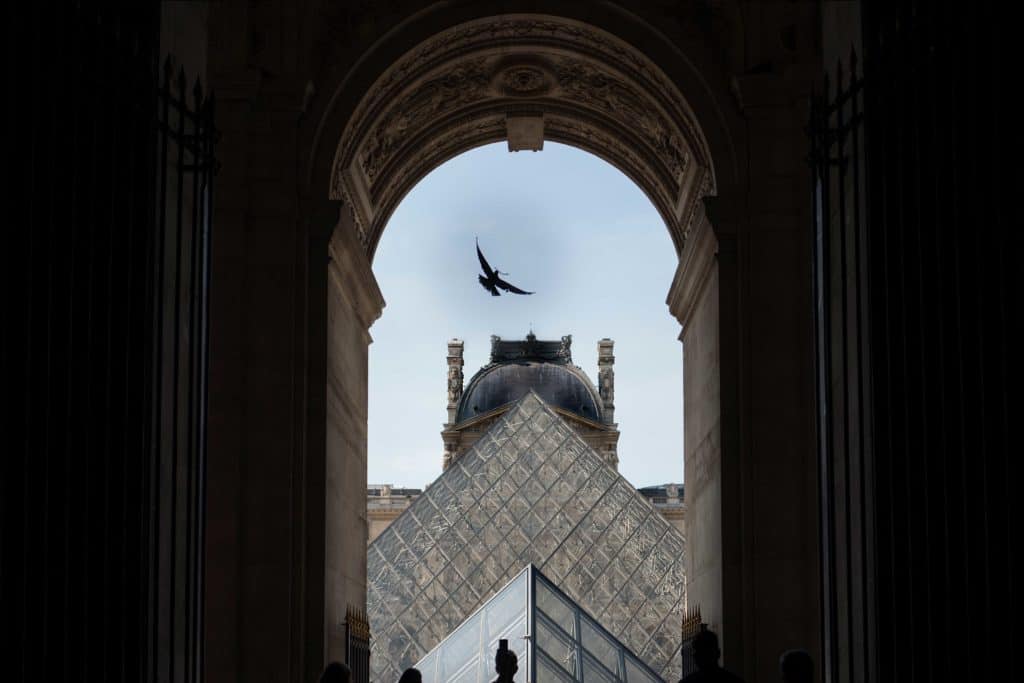
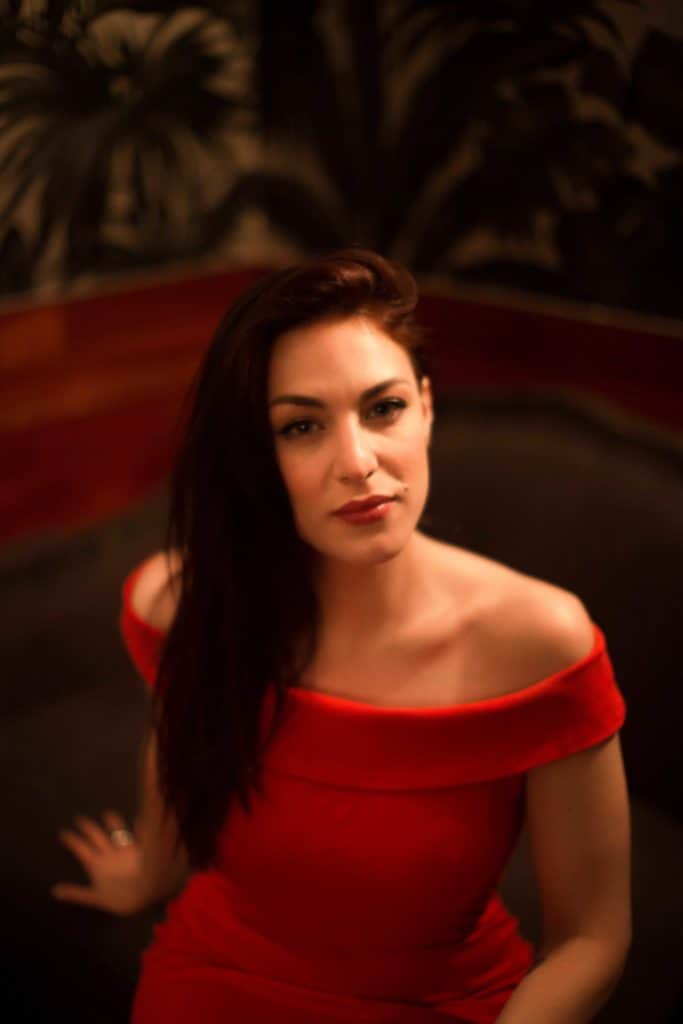
I adore going to the places the tourists go to—but late at night, when they are totally empty. Montmartre is gorgeous, but the Square du Vert-Galant, on the western tip of the Île de la Cité, is even more atmospheric.
Soon I’m in Pigalle, the storied red light district on the fringes of Montmartre. Much of this dirty old neighborhood has been cleaned up. The Moulin Rouge, immortalized by Toulouse-Lautrec, looks as if it belongs in Vegas, and the area’s new boutiques and bars, with names such as Dirty Dick, are freighted with hipster irony.
I’m meeting the singer and Pigalle habitué Haylen Namvarazad. I spot her waiting for me on the still slightly sleazy Rue Pierre Fontaine, but the bar we’re meant to be going to doesn’t seem to exist. L’Orphée is hidden behind the frontage of a former massage parlor and reached only by pressing an unmarked buzzer, then passing through a strip-lit corridor and a second unmarked door. I can’t help thinking about the last 10 minutes of Taxi Driver.
After years of busking in Metro stations, Namvarazad found fame on a TV talent show and has since starred in the hit rock opera Le Rouge et le Noir. Musicians come to L’Orphée to jam in its red glow after hours. Tonight, a bearded singer delivers a bluesy rendition of “Hit the Road Jack.” A guy with a falsetto pays tribute to Ed Sheeran. Namvarazad channels Amy Winehouse with a tingling take on “Back to Black.”
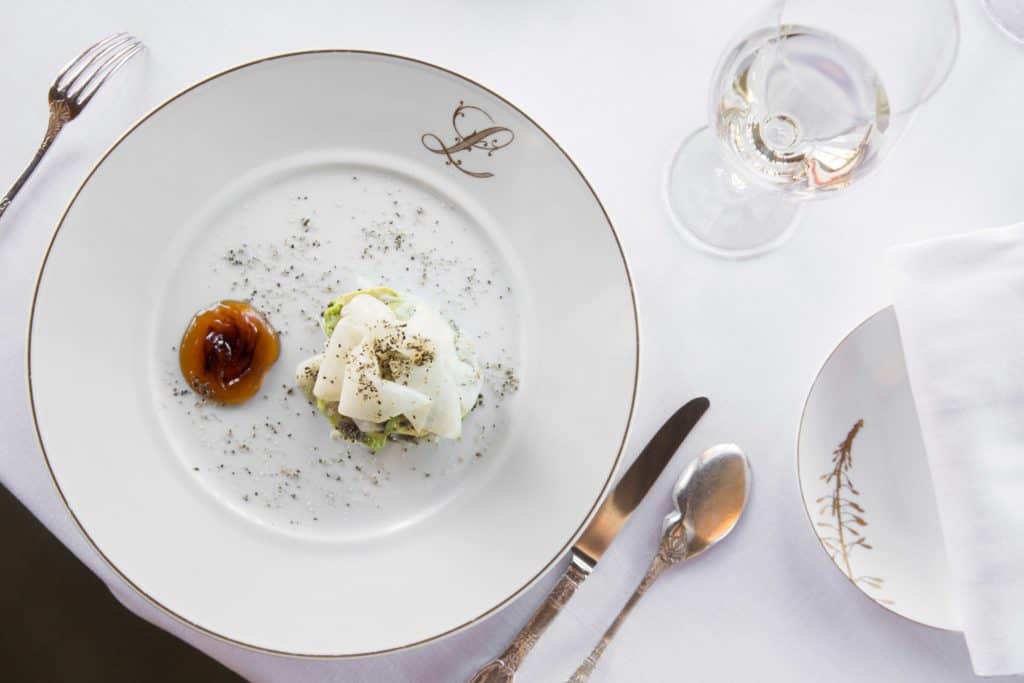
“This is the real spirit of Paris,” she says over a Desperados beer with a lime wedge. “It is creative, inclusive, optimistic. This city is very tribal, but in bars like this it doesn’t matter where you’re from or what stage your career is at. It’s people doing what they love and helping each other out.”
The loveliness of Paris has drawn artists for centuries, but you do wonder about living here, whether a person might start taking it for granted. “I was born here, and yet there is not a single day that I’m not aware of its beauty,” Namvarazad says. “Or rather, there is not a single night. When there is no one around and the city is lit up, it is magical. How could anyone not be inspired?”
Later, as my cab bounces past sprays of flowers cascading from tiny balconies, I see what she means. I can barely keep my eye on the meter.
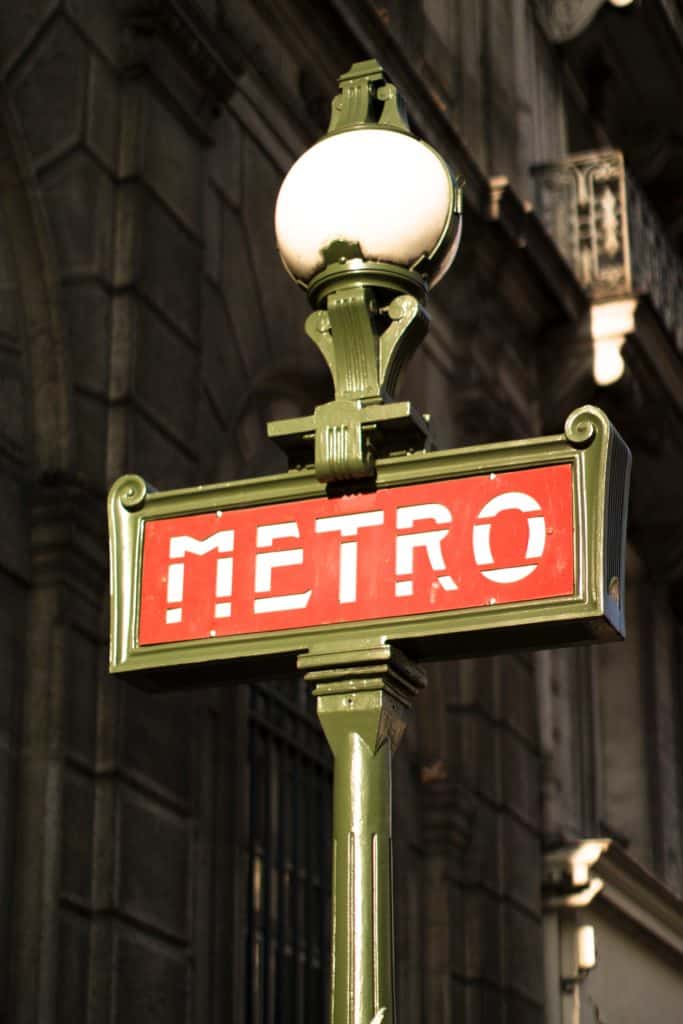
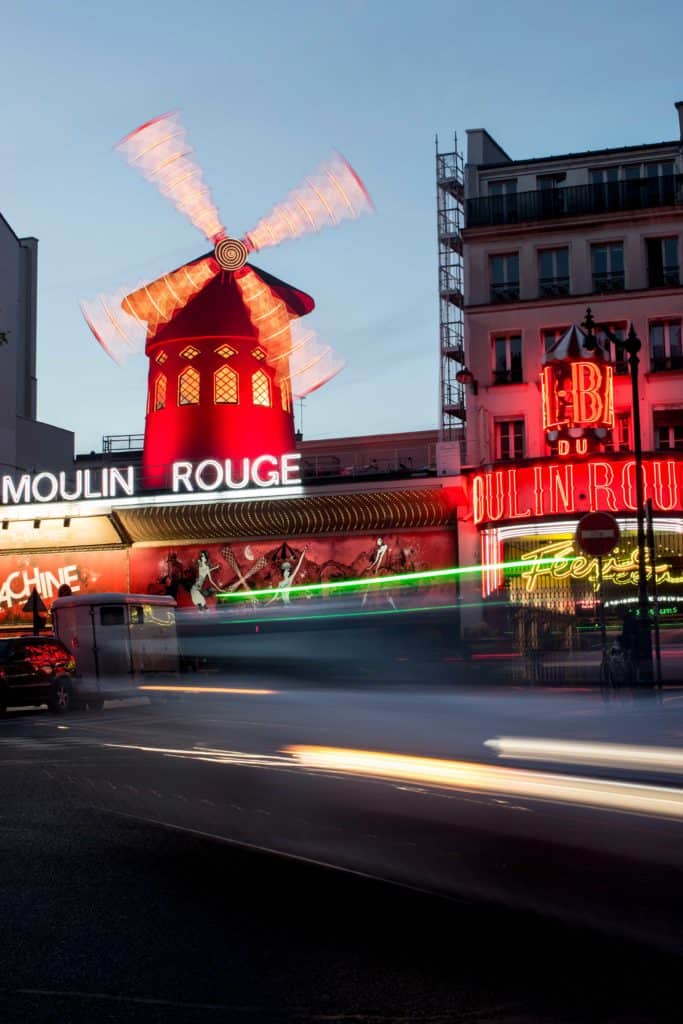
Day 2
In which Boyd encounters a large cheese, a large religious work of art, and a very, very large fish
An early start. I drop my bags in my minimal room at the Amastan, a small design-focused hotel at the foot of the Champs-Élysées. On one wall hangs a rug that drapes the sofa before continuing to cover the floor. Talk about minimal. After scarfing down some baby croissants in the courtyard, I head east to Le Marché Popincourt in the 11th arrondissement, where I meet Pierre Sang Boyer, owner of two eponymous restaurants nearby.
Boyer, who was born in South Korea and adopted by a French family when he was 7, is one of the city’s hottest chefs. He is also, by his own admission, a produce nerd. He squeals with pleasure at every stall, snapping stalks, fondling tubers, stroking fish, massaging poultry. “Look, this langoustine is still alive,” he chirps, dangling a twitching crustacean in my face.
“Markets remind us that we are all part of the same chain,” Boyer continues, hurrying on to another fascinating stall. “The farmer, the person preparing the food, the person eating it.” He stops before a meat display and asks a vendor to cut me some salami. As I chew, I notice a sign: Boucher Cheval, or horse butcher. “Delicious,” I whimper.
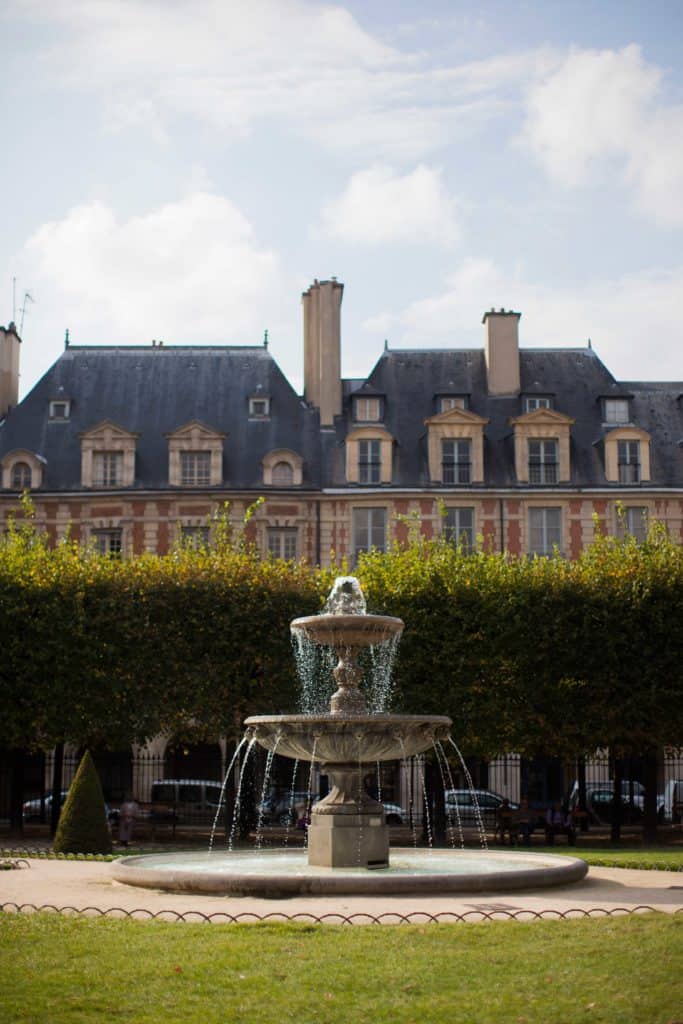
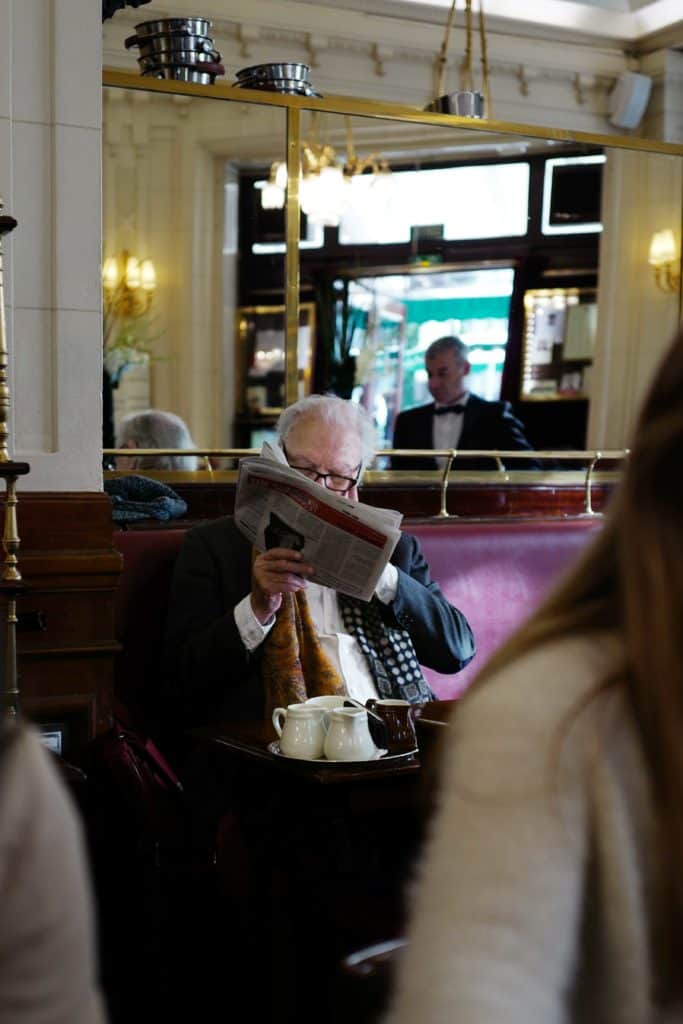
Everywhere here has a real community feel. You know your butcher, baker, and florist.
This part of the 11th has a lively nightlife scene, but by day its narrow streets teem with grocers hosing down sidewalks, shoppers swinging baskets, and men hauling sacks of produce. In Le Jardin Fromager, matronly Madame Sananès vacuum-packs a whole Camembert de Normandie for me to take home. In Poissonnerie Lacroix, Charly Hanafi gives me herring that’s been marinated for days in garlic and onions. I can smell the thing from six feet away, but at least it gets rid of the taste of Seabiscuit.
At Boyer’s pared-back restaurants (a walk-in counter that straddles the corner of rues Gambey and Oberkampf and a more upmarket spot about 100 feet away), there are no menus. Diners get a bunch of small plates, their contents dictated by the freshest ingredients that day. I decide to try out both kitchens. At the small one, I sample the radishes and spring onions Boyer scored at the market, served with shrimp and chili flakes, followed by slow-cooked pork belly in ssamjang, a sauce made with chili and fermented soybean paste. At the ritzier joint, I’m served a slab of seared beef with the same zingy ssamjang. As fusion food goes, French-Korean is tough to beat. Also, I can light my candle just by breathing on it.
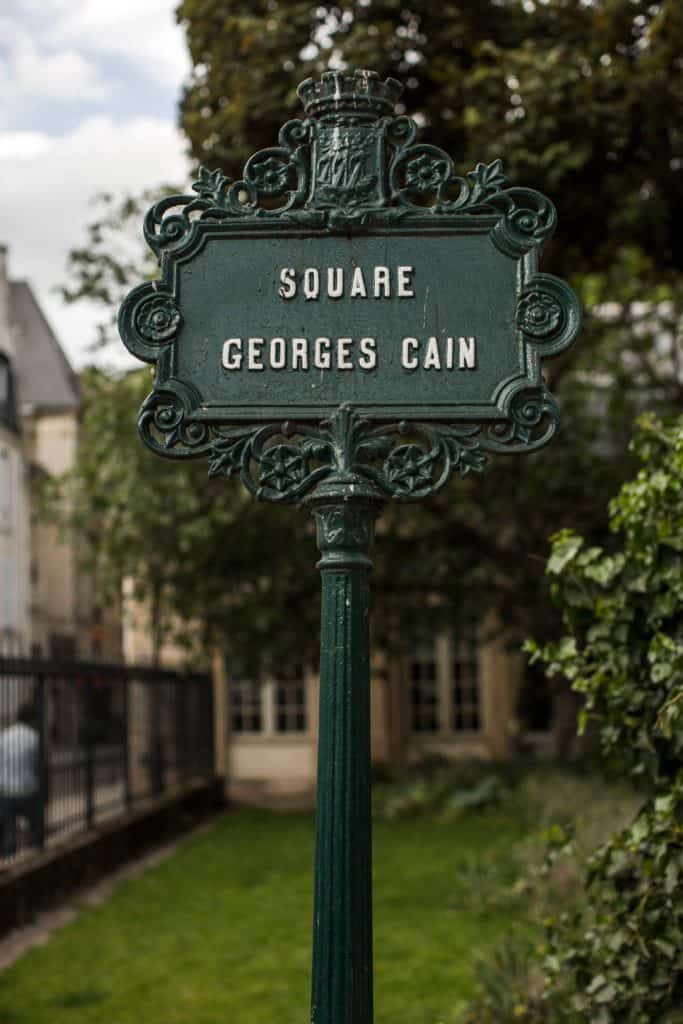
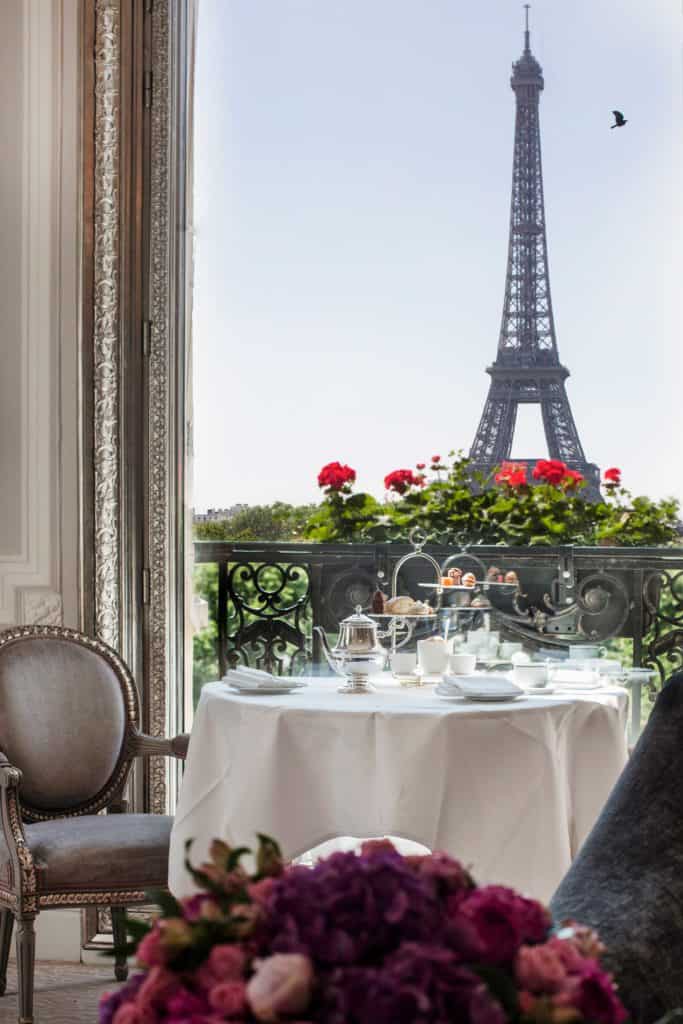
Another Metro ride takes me to the Musée d’Orsay, the former grand railway station on the Left Bank of the Seine that now houses some of the greatest European art of the 19th and early 20th centuries. At the security check, the guards eye my sealed camembert suspiciously. Inside, the museum still feels like a train station, its concourse filled with people in a hurry to get somewhere else—possibly the Impressionism section on the fifth floor. Here, people are queuing up with their selfie sticks to insert themselves among the revelers in Renoir’s Bal du Moulin de la Galette or to photobomb Van Gogh’s Self-Portrait. Two years ago, the Musée was forced to lift its photo ban after someone noticed that France’s culture minister had posted photos she took there on Instagram. Selfie sticks remain forbidden, but no one seems to care.
Next, I cross the Léopold Sédar Senghor footbridge, recently purged of its burdensome lovers’ padlocks, and pass back through the Jardin des Tuileries, to the hotel Le Meurice, on Rue de Rivoli, for afternoon tea. Only in Paris can a pastry chef be a superstar, and the pâtissier here, Cédric Grolet, is Ryan Gosling in a toque. Grolet is famous for his ambitious trompe l’oeil confections; I sample a tart that looks exactly like a real apple. It is good—and you have to admire the evil genius who disguises cake as fruit—but I prefer the gooey caramel-and-pistachio cookie.









A short stroll northwest takes me to La Madeleine, the Greek temple–like church built to celebrate the glory of Napoleon’s army. Fifty-two Corinthian columns, each 65 feet tall, skirt the exterior. In the gilded interior, the dominant fresco resembles the Sgt. Pepper’s album cover, with Napoleon surrounded by Mary Magdalene, the Apostles, Dante, Raphael, and Pope Pius VII, among others. Clearly, the Little Corporal was not short on self-esteem.
From here I’m off to Abbesses—which, at 118 feet down, is the Metro’s deepest station—to explore hilly Montmartre. Having learned that the station elevator is broken, I wheeze up 90 spiraling steps before surfacing into what appears to be the set of Amélie. A cobbled square is framed by colored crêperies—all called Chez this or Le Petit that—while sketch artists sit at easels and vendors hawk roses. All that’s missing is … no, wait, there is someone playing an accordion.
A cobbled square is framed by colored crêperies–all called Chez this or Le Petit that.
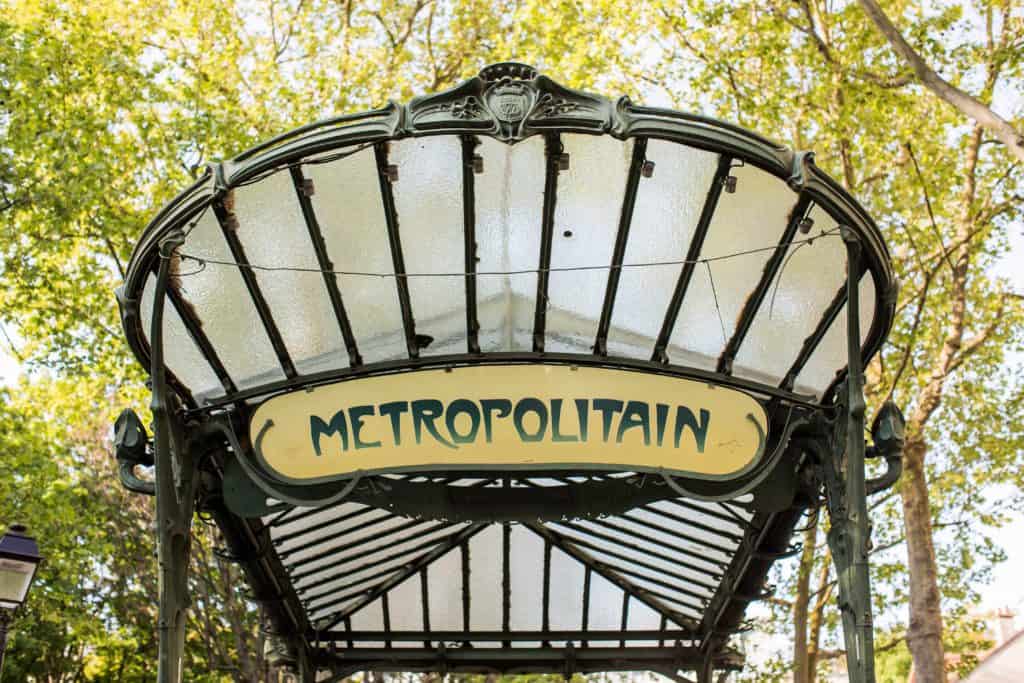
I check out the Sacré-Cœur, the 272-foot basilica at the top of Montmartre’s butte, the highest point in the city after the Eiffel Tower. Construction began in 1875 and was completed in 1914—as a penance or a pick-me-up after France lost its war with Prussia, it’s hard to say. Inside, a half dozen Benedictine sisters are beginning their vespers. Even above the mumble of tourists, the Latin song is ethereal and lovely, amplified by the huge apse rendered with a mosaic of Christ, in white, arms extended. I sit down with my giant cheese and watch as people file in and light votives or stealthily angle their phones for the ultimate shot: a selfie with Jesus.
For dinner, I head to the 1st arrondissement to meet my friend Sara at the Fish Club, a seafood restaurant from the team behind London’s Experimental Group. At 8:30, Sarah and I are the only ones here—but by the time we’ve drained a couple of drinks, the place is jammed, and I have to raise my voice to order the special: grilled sea bream, which our waitress says is big enough to share. No kidding. Other diners leave their own meals to Instagram our monster catch. Fileted tableside, it is so good we don’t touch our greens.
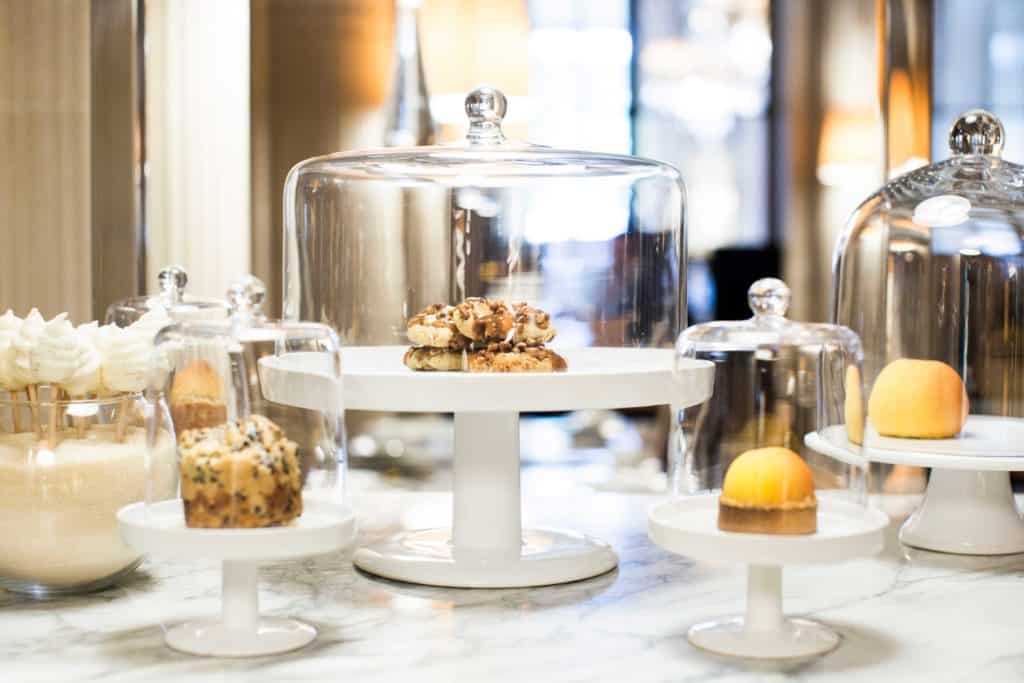
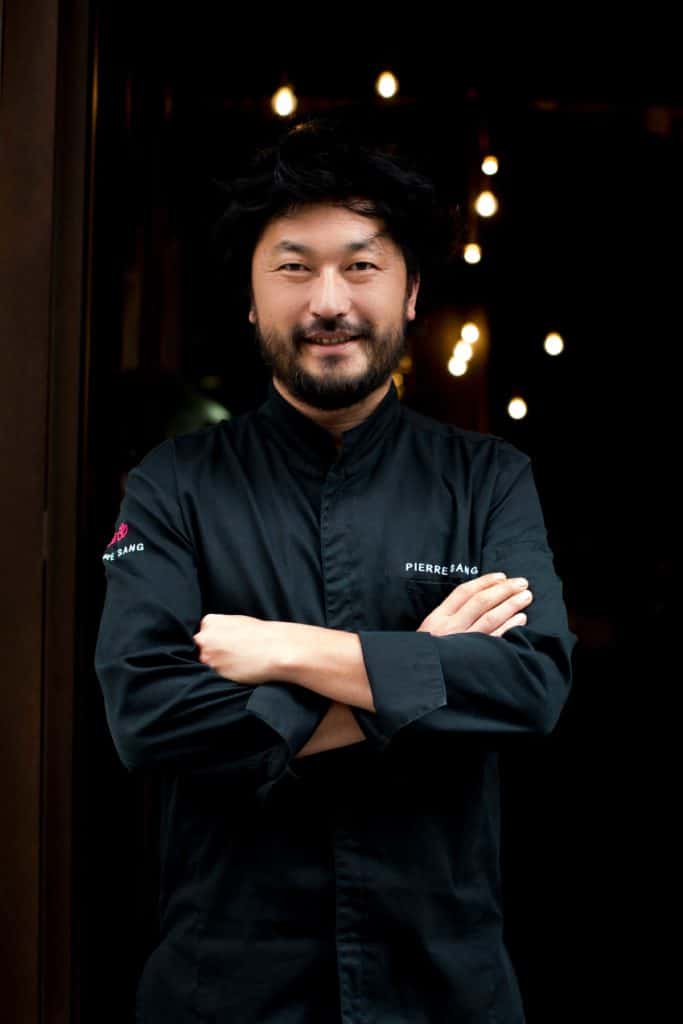
In many other cities, it is the artists who are responsible for rejuvenating areas. In Paris, it is restauranteurs. That says a lot about how important food culture is to Parisians.
I’m exhausted, but Sara tells me that the Experimental guys have a speakeasy next door. Beyond an unmarked (of course) entrance, we feel our way down a metal stairway and arrive in a barely lit bar with low velvet seating and a well-dressed—as far as I can tell—crowd. I down a Bourbon & French; Sara knocks back something citrusy. “Quick, let’s make a run for it,” she jokes. Or it may have been a delinquent on an adjoining banquette. Either way, we decide to stay for more cocktails.
By the time we leave, I’m so relaxed I hail a cab standing in the middle of the street. The driver looks terrified. Now, if I could only remember where I put my room key.
Day 3
In which Boyd breakfasts like Ernest Hemingway, shops like Louis XV, and has a Hugh Grant–like effect on the ladies
I check into the grand Hôtel Plaza Athénée on Avenue Montaigne, the backdrop for Carrie Bradshaw’s Paris adventures in the last two episodes of Sex and the City. The iconic red awnings match my eyes. After a refreshing shower, I head for the Left Bank.
The 5th and 6th arrondissements, along the Seine’s southern bank, used to be a bohemian enclave, home to struggling artists like Picasso and Matisse. Today, you’d have to sell a Picasso just to buy a small studio here. Next to Les Deux Magots, the café where Jean-Paul Sartre and Simone de Beauvoir used to hang out, stands a Louis Vuitton store.
The café now offers a “Sartre” breakfast, which includes yogurt or fruit salad, and the more robust “Hemingway,” which has bacon and fried eggs but, disappointingly, no whiskey. I settle for a croque monsieur.
Despite its embourgeoisement, the Rive Gauche (South Bank) hasn’t lost its soul. The cobbled streets and tastefully worn courtyards, along with a bounty of medieval churches, give the area a timeless feel. I especially enjoy the sixth-century Église de Saint Germain-des-Prés, the oldest Romanesque church in Paris, its square tower the focal point of the 6th. Some of the shops seem almost as old. Cire Trudon’s origins date to 1643, when it was founded as a candle shop. (Its wares lit Louis XV’s court.) Now it supplies tourists with $100-plus wax busts of Marie-Antoinette and Napoléon.
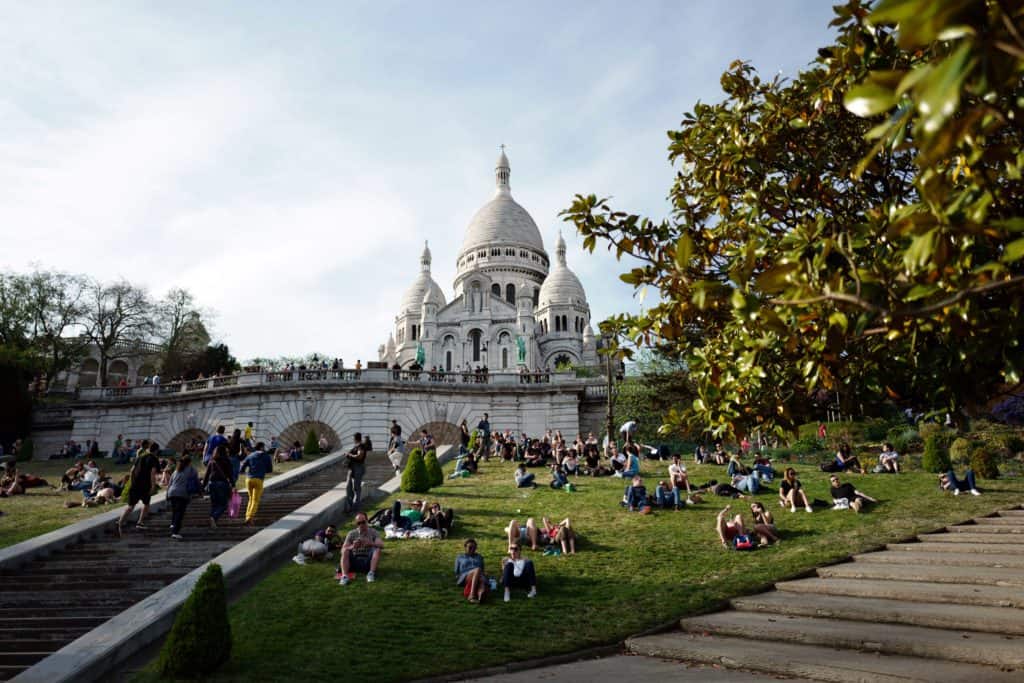
I head east along Boulevard Saint-Germain to the 5th arrondissement, known as the Quartier Latin since the 13th century (when the Sorbonne was founded and Latin was the language of learning). I zip around the Panthéon, the glorious Neoclassical monument that Louis XV built as a thank-you to God after he survived what was probably a case of man flu. Now it houses the tombs of Voltaire, Rousseau, Zola, Victor Hugo, and Marie Curie.
Not feeling too lively myself, I loop back to the Jardin du Luxembourg, where I slump into a garden chair. With 60 acres of immaculate parkland around me, the only sound is the crunch of gravel as the occasional jogger goes by. These are Parisian joggers, so no one is wearing lime Lycra. One woman may actually be wearing heels. On my way out, I step into the sweet little Musée du Luxembourg to catch an exhibition of Pissarro’s later pastoral scenes—a nice bonus.
After enjoying a fortifying salad of quinoa, goat cheese, and broccoli at the restaurant at Hôtel Bachaumont, which anchors the newly fashionable Rue Bachaumont in the 2nd arrondissement, I walk south to check out Paris’s regeneration project du jour, the billion-euro revamp of the previously forlorn Les Halles shopping mall. Approaching Les Halles from the north takes me past one of the loveliest buildings in Paris—which is saying something. Église St-Eustache, built between 1532 and 1637, is primarily Gothic, though a Neoclassical facade was slapped on its western side in the 18th century. On a wall inside hangs a Rubens painting; outside stands a gigantic Henri de Miller sculpture of a head and hand. All this makes the new retail and leisure complex look even more weirdly modern. Les Halles’s curvy yellow six-acre canopy makes it seem as if someone has dropped a giant omelette on the city.
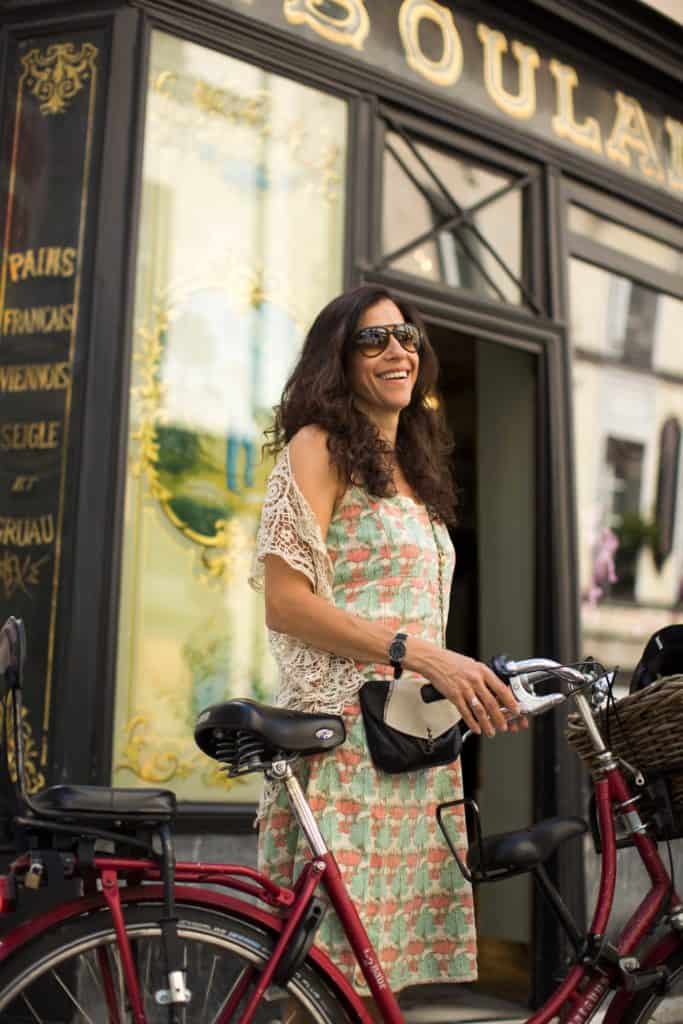
Parisians tend to enjoy life more–spending time with family, enjoying their surroundings. Of course, it does help when your surroundings are this beautiful.
A 15-minute stroll brings me to Rue des Rosiers, the higgledy-piggledy center of the Marais and the heart of the Jewish community. Poignantly, the sign outside the bustling kosher bakery Sacha Finkelsztajn announces the community’s postwar comeback: “From Father to Son since 1946.”
Dotting the medieval warren are many enchanting gardens. Place des Vosges is one of the oldest squares in Paris and regarded as one of the best, but I prefer the smaller Square Georges Cain, which is filled with treasures from the adjacent Musée Carnavalet. One of the most intriguing objects is a small electronic bird designed to sing like a nightingale when the wind blows. I don’t hear any birdsong, but the gate screeches like an angry parrot.
Near the Carreau du Temple—an iconic industrial market that reopened in 2014 as a cultural and exhibition venue—I meet Massachusetts-born Tanya Blumstein, who was so smitten when she arrived in Paris more than 20 years ago that she never went back. “It just felt like home as soon as I got here,” says Blumstein, a voice and dialect coach for theater and film who recently worked with Natalie Portman on Jackie. “Everywhere here has a real community feel. You tend to keep an eye on your neighbors’ kids; you know your butcher, baker, and florist. In most big cities, people don’t live like that anymore.”
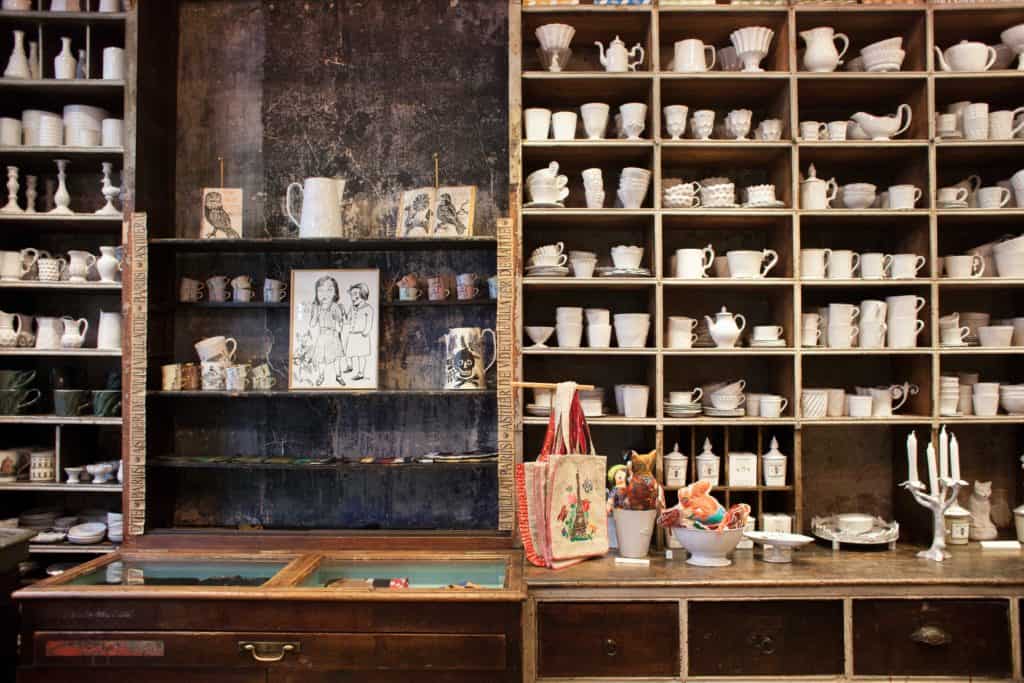
I can hear the chatter of tourists pleasure-cruising the Seine and the muffled voices of a couple sharing a bottle of wine by the water’s edge.
We mooch around some of the city’s most gentrified rues Saintonge, Bretagne, Poitou. On the corner of Poitou is the Petit Moulin, a tiny hotel that’s housed in a former boulangerie and whose interiors are a riot of Christian Lacroix. As we pass, the actor Pierre Niney, who played Yves Saint Laurent in a 2014 biopic, cycles past. Could this be any more French?
It could. In Jacques Genin’s showroom-size chocolate shop on lively Rue de Turenne, a loved-up couple agonizes over a chocolate display as if choosing an engagement ring. I’m agonizing too, over how many kirsch caramels I dare take from the sample jar.
The Marais has long been Paris’s most BoBo (Bourgeois Bohemian) area, but things may have gotten out of hand. At Nanashi on Rue Charlot, vegetarian “Parisian Bento” boxes are served by staffers with lion-tamer mustaches. We pause to nibble retro shortbread at Bontemps, a patisserie opened by a former financier, and sip blueberry-lavender smoothies at Wild & The Moon.
Back at the decidedly un-BoBo Plaza Athénée, I soothe my limbs in a deep marble tub. The blisters on my feet are so big they may soon need their own arrondissement. I’m dining in the hotel restaurant tonight, and I wonder if the dress code extends to the fluffy white slippers that were left beside my bed.
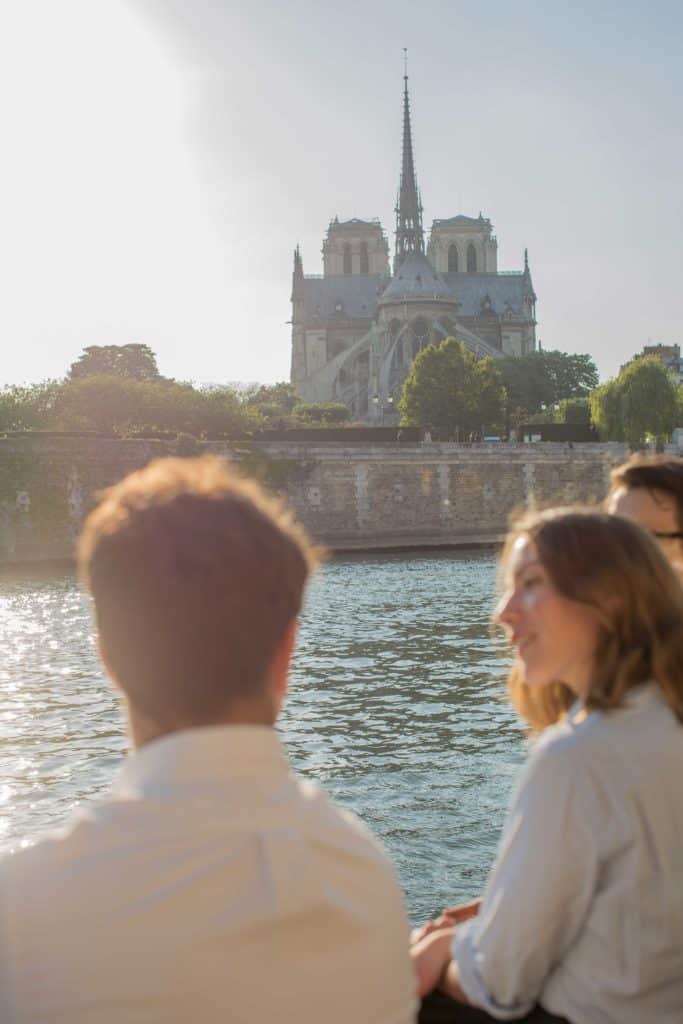
That dinner, taken in a corner berth in the handsome Le Relais Plaza brasserie, is a gratifyingly no-nonsense affair: an entrée-size starter of crevette salad, tender beef served with mashed potatoes, and a trio of sorbets. I’m glad I went with regular shoes—I have to walk at least some of the bread basket off before I can even contemplate going to sleep.
I cross nearby Pont de l’Alma and walk along the Left Bank, admiring the way each building is subtly and artfully lit, like movie stars in a black-and-white film. I can hear the chatter of tourists pleasure-cruising the Seine and the muffled voices of a couple sharing a bottle of wine by the water’s edge. People throng outside Faust, a nightclub beneath the exuberant Pont Alexandre III. As I thread my way through the crowd, a young Frenchwoman bumps into me, spilling wine down my shirt. Being English, I apologize. She smiles, kisses my cheek, and disappears. Okay, so it’s not a Robert Doisneau moment, but it’s not a bad way to say goodnight to the city—the Eiffel Tower to the west, its sparkling light show reminding us that the clock has just struck 12.
Berlin-based writer Boyd Farrow is not the first person to fall in love in Paris. Three weeks after he returned home, he is still blissfully happy with his camembert.
Up Next: Three Perfect Days in Auckland




